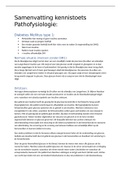Samenvatting
Extensive summary required readings PoD quiz3 (lectures 8-11)
-Extensive summary of all the required reading for the Politics of Difference -Includes enough information to understand all the articles if you have not read them -includes all the reading for lectures 8-11
[Meer zien]













